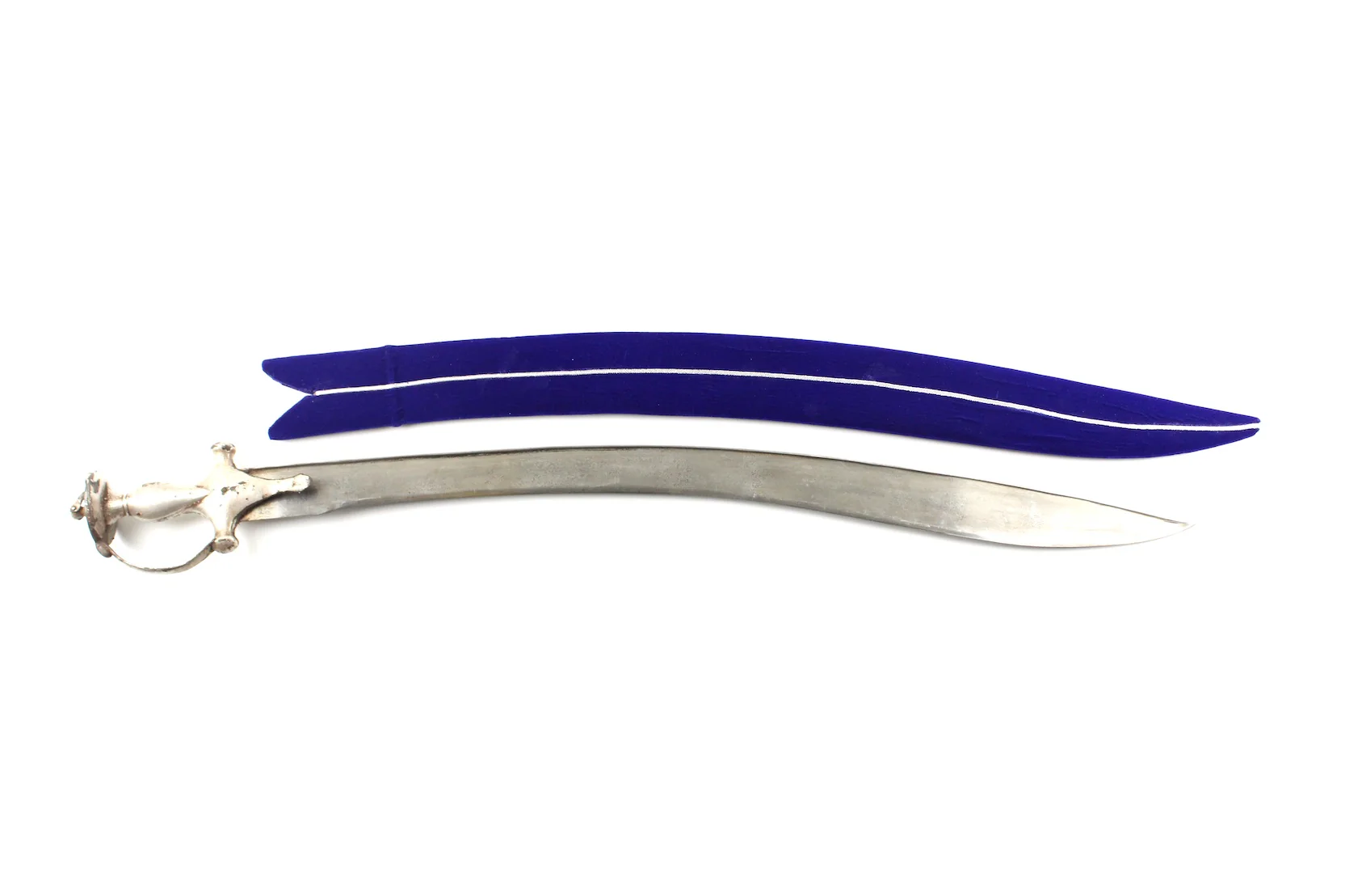The history of the Indian swords can be traced back to the ancient Indus Valley Civilization, which dates back 5000 years. Throughout history, Indian swords evolved and diversified into various distinctive types. This article aims to delve into the array of Indian swords, covering some renowned examples such as the Khanda, and Danda pata, amongst others.
Khanda
The history of the Khanda sword is deeply intertwined with the Sikh faith and the martial traditions of the Indian subcontinent. Originating in ancient India, the Khanda’s design evolved over centuries, influenced by various cultural and military factors.
The Khanda’s distinctive form, characterised by a double-edged blade and a unique hilt with a crossguard and central protrusion, emerged as a symbol of Sikh identity and sovereignty during the 17th century. It became closely associated with the Khalsa, the community of initiated Sikhs, under the leadership of Guru Gobind Singh, the tenth Sikh Guru.

Sossun Patah
The word Sosun Pattah means “lily leaf.” The exact origins of the sword are somewhat obscure, but it is believed to have emerged during the medieval period in India. It evolved from earlier forms of Indian swords and was specifically designed to meet the needs of combat in the diverse terrains of the region.
One of the most notable features of the Sosun Patah is its elongated, narrow blade with a distinct curve towards the tip. This curvature facilitated agile and effective slashing and thrusting movements in combat. The hilt of the Sosun Patah typically featured a distinctive knuckle guard, providing protection to the wielder’s hand during combat.

Danda pata
Danda pata likely evolved from simpler wooden staves used for hunting and self-defence. Over time, the weapon evolved to incorporate a blade, enhancing its offensive capabilities. It is also called a gauntlet sword.
The Danda Pata typically consists of a sturdy wooden staff ranging from three to six feet in length, with a sharp blade attached at one end. The blade may vary in size and shape, but it is commonly curved and single-edged, resembling a short sword or machete. The staff itself is often reinforced with metal fittings for added durability.

It is a versatile weapon capable of delivering both blunt-force trauma and cutting or slashing attacks. Its design allows for a wide range of offensive techniques, including thrusting, slashing, and blocking.

